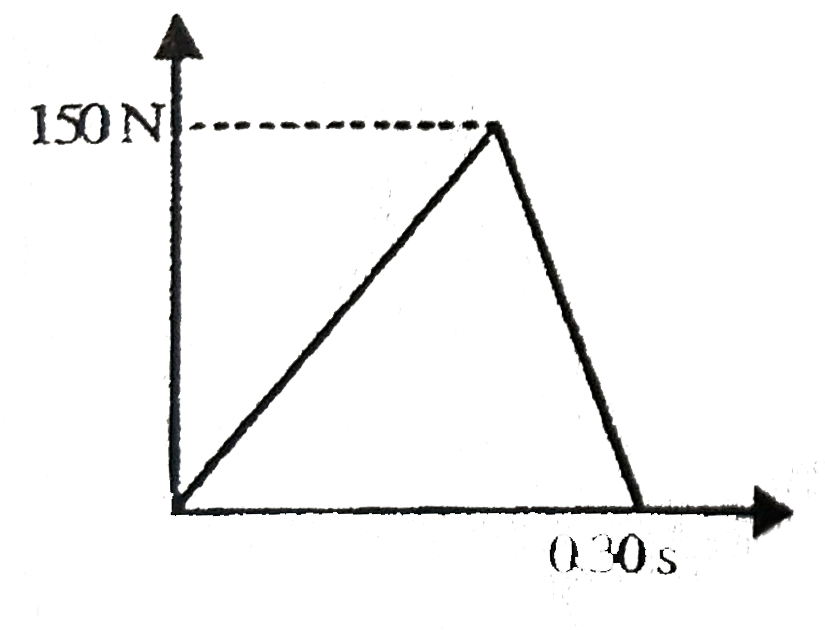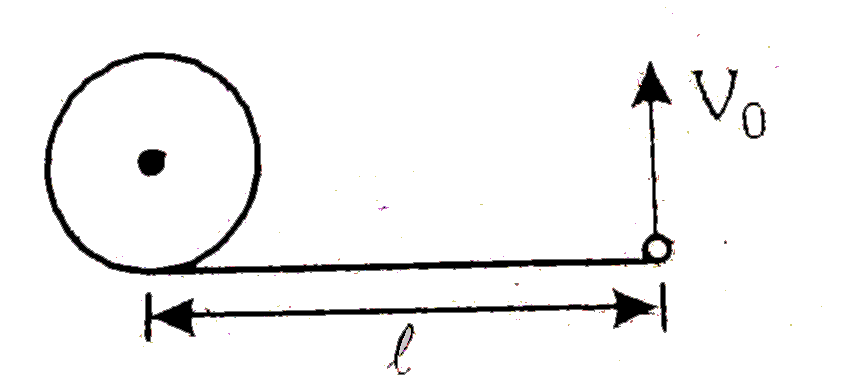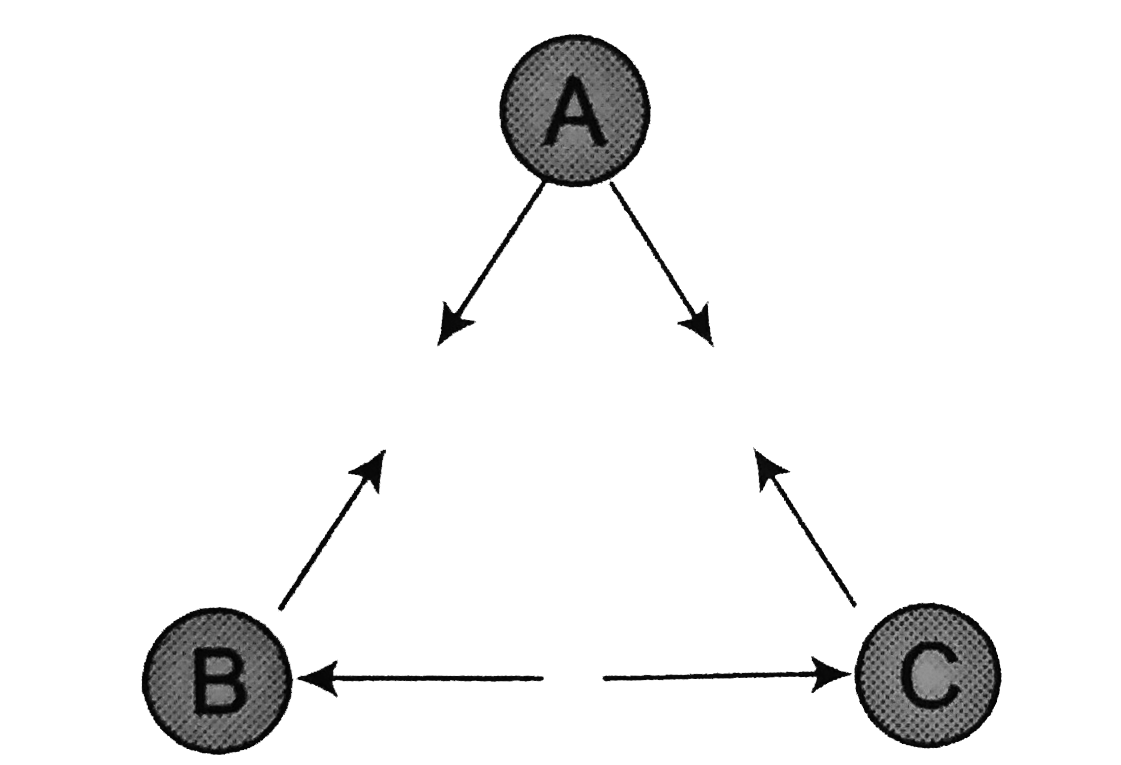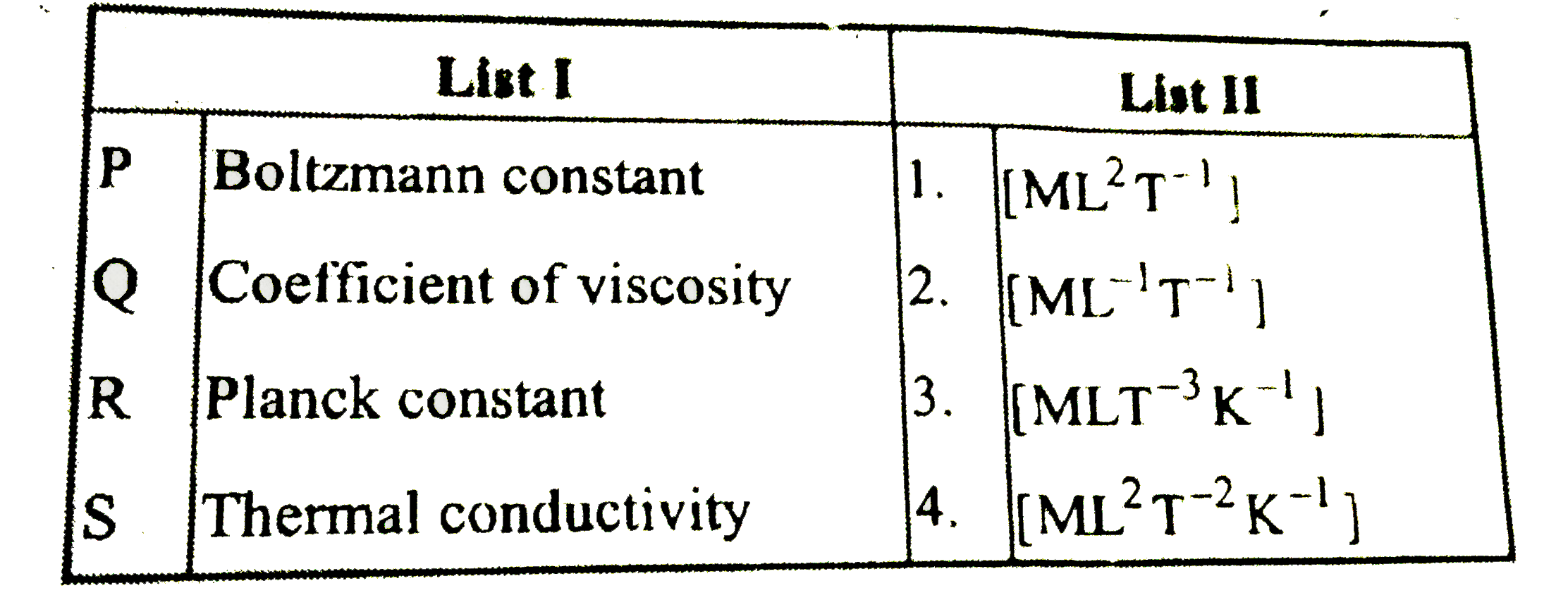Two bodeis A and B of masses 5.00 kg and 10.0 kg respectively moving in opposite directions with velocities 4.00 m/s and 0.50 m/s respectively make head-on collision in free space. The force of their mutual interaction varies according to the given graph. Select incorrect statement.
 Solution in Gujrati
Solution in Gujrati
Period of deformation is 0.20 s.
Coefficient of restitution is 0.4.
Body A will move with velocity 0.5 m/s in the original direction.
Body B will move with velocity 1.75 m/s in the opposite direction.
The correct Answer is:C
Common velocity at maximum deformation
vcommon=5×4+10×(−0.2)5+10=1m/s
Change in momentum of 5 kg ball in deformation period =5[4−1]=15kgm/s
In this period impulse
=12(150)t=15⇒t=0.20s
Therefore period of deformation =0.20s and period of recovery=0.30−0.20=0.10s
Coefficient of restitution
=Inpulse of recoveryImpulse of deformation=0.100.20=12
Final velocity of body A
=5×1−12×150×0.15=−0.5m/s
Final velocity of body B =10×1+12×150×0.110=+1.75m/s
Topper's Solved these Questions
- TEST PAPERSBOOK - ALLEN CHAPTER - TEST PAPERSEXERCISE - Part-1 Physics
15 Videos
- TEST PAPERSBOOK - ALLEN CHAPTER - TEST PAPERSEXERCISE - part-2 physics
73 Videos
- TEST PAPERSBOOK - ALLEN CHAPTER - TEST PAPERSEXERCISE - PAPER 2
60 Videos
- TEST PAPER 4BOOK - ALLEN CHAPTER - TEST PAPER 4EXERCISE - PHYSICS
45 Videos
- UNIT & DIMENSIONS, BASIC MATHS AND VECTOR BOOK - ALLEN CHAPTER - UNIT & DIMENSIONS, BASIC MATHS AND VECTOR EXERCISE - Exercise (J-A)
7 Videos
Similar Questions
A quantity of 2 mole of helium gas undergoes a thermodynamic process, in which molar specific heat capacity of the gas depends on absolute temperatureT , according to relation:
C=3RT4T0
where T0 is initial temperature of gas. It is observed that when temperature is increased. volume of gas first decrease then increase. The total work done on the gas until it reaches minimum volume is :-
View SolutionA bead is connected with a fixed disc of radius R by an inextensible massless string in a smooth horizontal plane. If the bead is pushed with a velocity v0 prependicular to the string, the bead moves in a curve and consequently collapses on the disc. Then

View SolutionThe diagram shows the arrangement of three small uniformally charged spheres, A,B and C. The arrow indicate the direction of the electrostatic forces acting between the spheres (for example, the left arrow on sphere A indicates the electronstatic force on sphere A due to sphere B). At least two of the spheres are positively charged. Which sphere, if any, could be negatively charged?

View SolutionTwo forces, each of magnitude F have a resultant of the same magnitude F. The angle between the two forces is
View SolutionMatch List I with List II and select the correct answer using the codes given below the lists :

View SolutionA body of mass 3 kg moving with a velocity of 4 m//s towards left collides head on with a body of mass 4 kg moving in opposite direction with a velocity of 3 m//s . After collision the two bodies stick together and move with a common velocity which is
View SolutionA body of mass 2 kg moving with a velocity 3 m//s collides with a body of mass 1 kg moving with a velocity of 4 m//s in opposite direction. If the collision is head on and completely inelastic, then
View SolutionTwo bodies of masses 0.1 kg and 0.4 kg move towards each other with the velocities 1 m/s and 0.1 m/s respectively, After collision they stick together. In 10 sec the combined mass travels
View SolutionTwo smooth spheres A and B of equal radii but masses 1 kg and 2 kg move with speeds 21m/s and 4 m/s respectively in opposite directions and collide. The velocity of A is reduced to 1 m/s in the same direction. Then, which of the following statements is incorrect?
View SolutionA body of mass 2 kg, travelling at 4 m/s makes a head-on collision with a body of mass 1 kg travelling in the opposite direction with a velocity of 2 m/s, the velocities of the two bodies after collision are
View SolutionTwo bodies of masses 3 kg and 2 kg collide head-on. Their relative velocities before and after collision are 15 m/s and 5 m/s respectively. The loss of kinetic energy of the system is
View SolutionThere is a head on collision between two bodies A and B. The mass of A is 5 kg and it is moving with a velocity of 4m/s towards right. The mass of B is 4 kg and it is moving with a velocity of 5m/s in the opposite direction. After collision, they stick together. What is their common velocity after collision?
View SolutionTwo balls A and B having masses 1 kg and 2 kg, moving with speeds 21 m/s and 4 m/s respectively in opposite direction, collide head on. After collision A moves with a speed of 1 m/s in the same direction, then the coefficient of restitution is
View SolutionTwo bodies of mass 4 kg and 5 kg are moving along East and North directions with velocities 5 m//s and 3 m//s respectively. Magnitude of the velocity of centre of mass of the system is
View SolutionTwo bodies of masses 5 kg and 10 kg move towards each other with velocities 10m⋅s−1and14m⋅s−1 respectively. If the coefficient of restitution is 0.8, find their velocities after the collision.
View SolutionA body of mass 6kg travelling with a velocity 10 m/s collides head - on and elastically with a body of mass 4kg travelling at a speed 5 m/s in opposite direction. The velocity of the second body after the collision is
View Solution